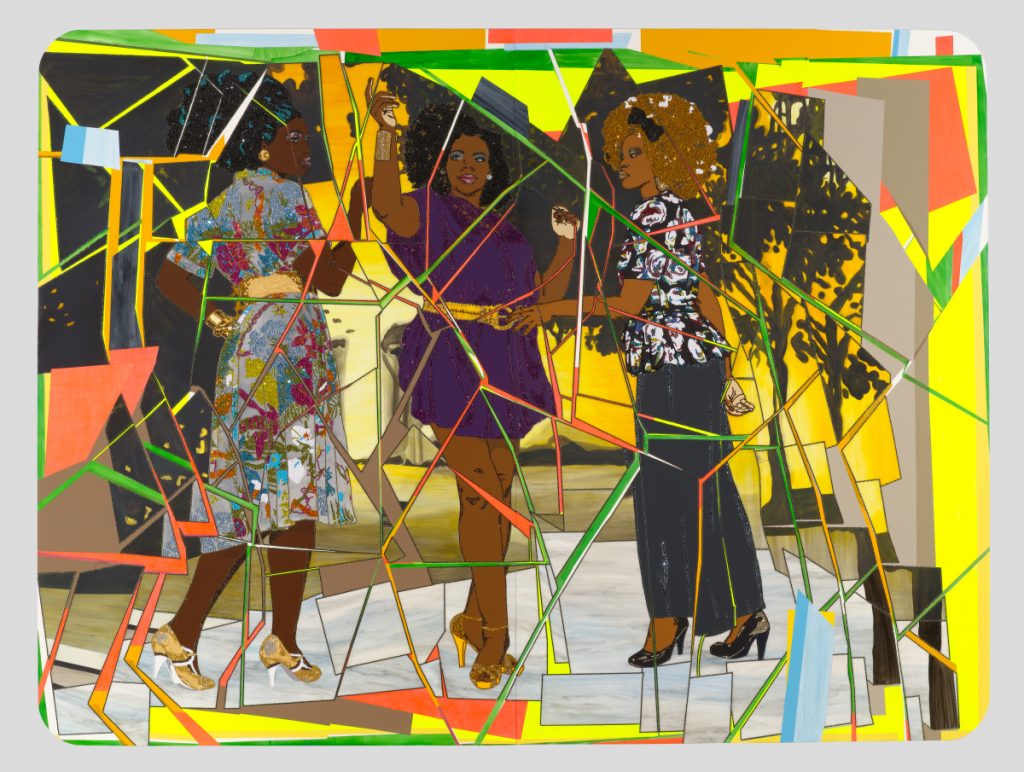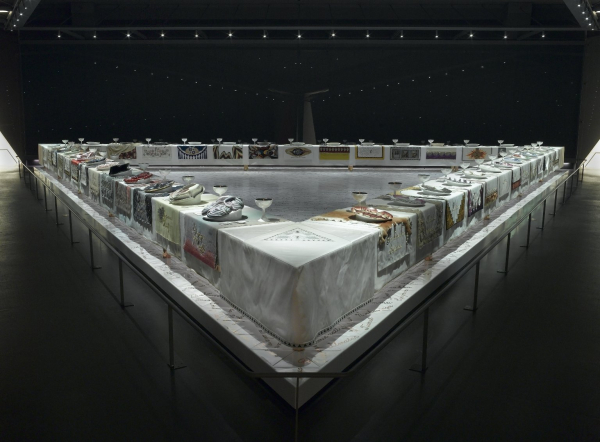Contemporary art represents art in the latter half of the 20th century to now. Contemporary art differs from other art eras in the past by being heavily influenced by advancements in technology, modern culture, and global influence. One of the most profound and interesting artforms that have become more prevalent in contemporary art is performance art. Performance art is an art form that is not just to be viewed at, but to also be experienced. This art form transcends the basic capabilities of art by making the spectator a part of the art which in turn, encourages the spectator to not just view the ideas and beliefs of the artist but to engage in those ideas and beliefs of the artist.
Performance art is a profound way to express the artist idea and beliefs to society. One of the most prolific uses of performance art is for women to challenge the ingrained constructs of society as a whole, which many women performance artist looking to do. They look to challenge themes of the perception of a woman and their body, the role of women in society and much more, which is explored through the female artist and is engaged by the spectator.
| Yoko Ono, Cut Piece, 1964 |
Born in Tokyo, February 18, 1933, Yoko Ono is a female contemporary artist who uses her art to challenge the spectators ideas and beliefs. One of Yoko Ono’s most prolific artworks is her performance piece, “Cut Piece” in 1964. This piece is performed by Yoko herself and involves spectators cutting pieces of her close off. In one simple perspective this work shows a female’s clothes being cut off by strangers but their is deeper meaning in this work which shows the view of women being objects. In this piece Yoko is looked at as an object to the spectator, the spectator feels empowered in this situation and do as they please to Yoko. In this piece Yoko represents the view of women in society, they are looked at as objects that can be manipulated to fit the desires of men, which men are represented as the spectators in her performance piece. This type of imagery is compelling because it’s just a static piece of work its living, its real, it showcases the truest and raw nature of society and how it views a woman's place in society compared to men. Yoko’s work also expresses how the male gaze also plays a key role in society, which is represented through the cutting of her close to reveal her naked body to the spectator, which is how they want it and how they want to view it. Yoko challenges these issues by showing the raw impulses and actions of the spectators cutting her clothes for their desires and pleasures.
| Faith Wilding, Waiting,1974 |
Faith Wilding, born in 1943 in Paraguay and immigrated to the U.S in 1961. She is another contemporary artist whose artworks is more than what is seen but what can be derived from it. One of these artworks is her performance piece, “waiting” in 1974. This piece shows Faith sitting down and talking out loud about waiting for things. The brilliance in her performance piece is that she expresses how a woman needs to wait for a man to do things, a woman needs permission from a man to do things, basically, a woman needs a man so she can do anything in society. This piece shows how females are forced to rely on men to do anything, they have no free will and must “wait” for a man to give them permission. She challenges the social hierarchy by literally forcing spectators to hear these issues head-on by making them uncomfortable and see the true perspective of how women feel in society.
Marina Abramovic, Rhythm 0, 1974
|
Marina Abramovic, born in Yugoslavia on November 30, 1946. She is well known for many of her performance pieces that are not only meant to be viewed but to invoke questions and meanings within her performances. One of her most profound performance art pieces, “Rhythm 0” in 1974. In this performance piece, Marina is standing still for 6 hours, while the spectators are allowed to use objects from a table to do whatever they want to her. During this time the spectators took off her close and played around with her and used the objects as they please with her body. This performance showed how once again woman bodies were only viewed as objects, Marina herself is viewed as an object with no sense of humanity to the spectator's eye. This performance challenges the view of woman in society by showcasing the actions of the spectators, the men of society, separating Marina and her humanity and viewing her as just a piece a meat an object they feel justified to manipulate to their own desire. This shows how the spectators feel justified in what they are doing to Marina because society has taught them that women are only meant to please men and doing as you please to women is just part of that belief in society.
| Adrian Piper, Cornered, 1988 |
Born in New York City, September 20, 1948, Adrian Piper is another female contemporary artist who not only addresses female issues in her art but also tackles race and the barriers that a woman of color must face in a predominately white patriarchal society. She showcases these challenges through her performance piece, “Cornered” in 1988. In this piece Adrian filmed herself confronting the spectator about her race and her gender. She makes the viewer uncomfortable in this manner and makes them confront their own demons related to how they may treat women and women of color. This performance challenges society's racial and gender issues by Adrian addressing those issues by speaking about them by forcing the spectator to acknowledge their form of racism and sexism. This piece leaves an impression on the spectator by laying out issues of identity, gender, race, equality, freedom and more that can be extracted from this piece by forcing the spectator to look within themselves and understand the issues women and women of color face.
Tracey Emin, Exorcism of the Last Painting I Ever Made, 1996
|
Tracey Emin, born on July 3, 1963, in the U.K, is a contemporary female artist whose works showcase the nude female and societies view of the female body. Her art challenges the male gaze of the nude female body and looks to redefine the views of a nude female body in society in order to give power back woman and their bodies. She embodies these issues through her performance piece, “Exorcism of the Last Painting I Ever Made” in 1996. In this performance piece, a naked Tracey locked herself in a gallery room with empty canvas and paint, and some peepholes around for the spectator to view her. This performance is intriguing because it showcases a woman locked up in a gallery room, which can represent how women may feel oppressed in society by males. Another important aspect of this piece is how she is naked, but this time is in control of what she does with her body. Even with that though spectators still view her naked body for their own entertainment. This work challenges social views of women oppression by literally showing Tracey naked and locked in a gallery room, Tracey represents a woman ,while the gallery room can represent a cage that is locked shut by social constructs and views of women, while the spectators represent people going with the flow of society and doing nothing to change it.
Works Cited
https://www.moma.org/learn/moma_learning/yoko-ono-cut-piece-1964/
https://hyperallergic.com/103569/waiting-for-faith-wilding-on-the-internet/
https://www.guggenheim.org/artwork/5177
https://www.artspace.com/magazine/art_101/book_report/adrian-piper-cornered-dca-53390
https://www.saatchigallery.com/artists/artpages/tracey_emin_painting_6.htm































